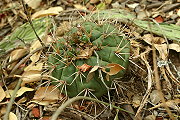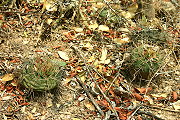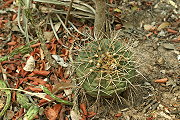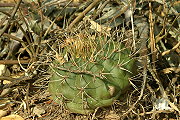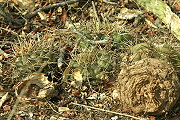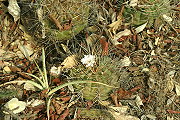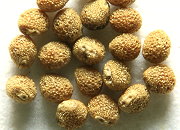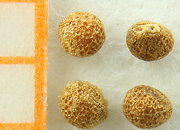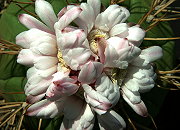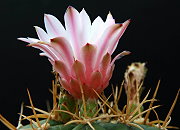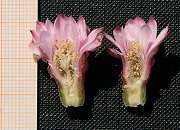Gymnos from A to Z
Gymnocalycium eurypleurum Ritter
There is great uniformity in all populations I found. The plants mostly appear fresh and green in spite of often extremely lengthy dry periods. Dispersion of the species is greater than hitherto known. According to my current state of knowledge it reaches approximately 124 square kilometres, so far limited to North Paraguay. G. eurypleurum is considered a unique species in modern cacti literature. In my opinion, the species is most closely related to the plants we count as part of the G. anisitsii/damsii complex today.
Plant
The species always grows solitarily, mature plants become slightly short columnar, plants often look a juicy green, up to 200 mm in diameter, with a somewhat sunken apex. Up to 16 ribs, very flat and broad, slight protuberances and often a small horizontal indention above the areolas. Areolas covered by some tomentum. Thorns mostly straight, light-brown and protruding from the body. Radials are up to 60 mm in length, the central spine - when one exists - has the same length.
Seed
The fruit is round, about 20 mm in diameter, red with scales of the same colour, fruits are juicy and of a carmine colour. Seeds almost nodular, yellowish brown, very fine protuberances, about 0,7 mm in length, white hilum, long and thin.
Flower
Flowers grow mostly near the apex, bell-shaped, about 30 mm in length and diameter. Inner petals are white to light pink, outer petals are a light purple colour with a dark purple centre strip. Filaments and style are white.
